Definition
A fossil is the mineralized partial or complete form of an organism, or of an organism’s activity, that has been preserved as a cast, impression or mold. A fossil gives tangible, physical evidence of ancient life and has provided the basis of the theory of evolution in the absence of preserved soft tissues.
Overview
The root of the word fossil derives from the Latin verb ‘to dig’ (fodere). A preserved inorganic object is not a fossil. The same applies to the mummification, desiccation and freezing of organisms, as mineralization is not a characteristic feature of these processes.Fossil form depends on the material in which it is preserved, and the ancient environment. Fossils can also represent organism movement and activity in the form of footprints and boring holes. An insect trapped in amber is a fossil subtype known as an inclusion; the originally soft, gum-like coniferous tree resin has fossilized into stone-like amber with the chitinous skeleton of the insect inside preserved, as shown below.
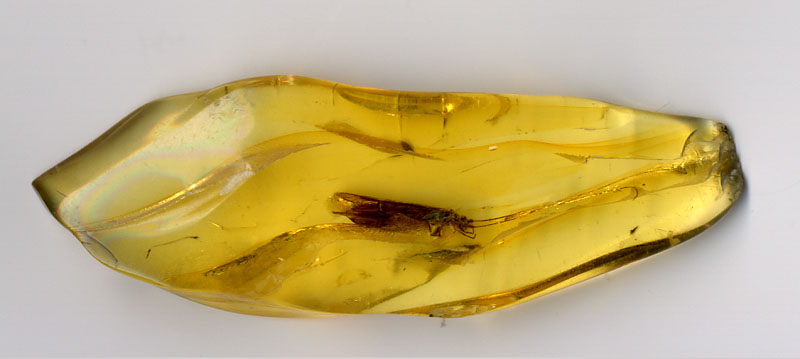
The oldest human fossil, where human refers to Homo erectus, Homo ergaster, and Homo georgicus, was a set of five skulls found in Dmanisi in Georgia between 1999 and 2005. These date back to approximately 1.8 million years ago. The oldest fossil remains depict five different species of microbe, preserved in a 3.5-billion-year-old rock in Australia. These microbes were carbon-dated by researchers at UCLA and the University of Wisconsin-Madison.
Types of Fossils
Fossil types are grouped according to the process in which they are formed, or to the evidence they have left behind. The method by which fossils are formed is termed as fossilization. Optimal conditions for fossilization are that an organism is buried very soon after its death and in the absence of bacterial or fungal decay, that mineral-rich waters and sediments surround the site, and the immediate environment is cool and hypoxic.
Compressions
Compressions are the most common fossil form, especially in plants, where some or the entire original organism is left behind as an imprint as the organism is slowly compressed between sediment layers. This means compression fossils are often distorted. Coal, a fossil fuel, is an example of a compression, where the combination of fallen vegetation on hypoxic swampland formed a sludge which was slowly compressed under the vertical pressures of swampland silts, and over a course of approximately 300 million years. Coal, a source of fossil fuel energy, is therefore far from a renewable source.
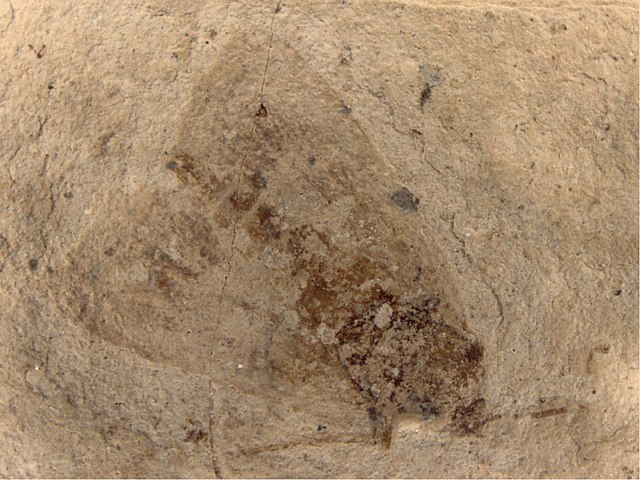
A sub-genre of the compression fossil is the compaction fossil. Compactions have less flattening and distortion, and a three-dimensional form is partially observable. Compactions are rare among crustaceans, as the hardest tissue (the shell or exoskeleton) is not supported by internal structures, leading to collapse and a compressed fossil. In larger, more complex organisms, soft tissues are usually unable to support the skeleton, and therefore the fossil forms are more likely to be compressions than compactions. Compactions of plant forms are more commonly found, but the famous Archaeopteryx bavarica shown below is a good example where some slight three-dimensional structure can still be observed.
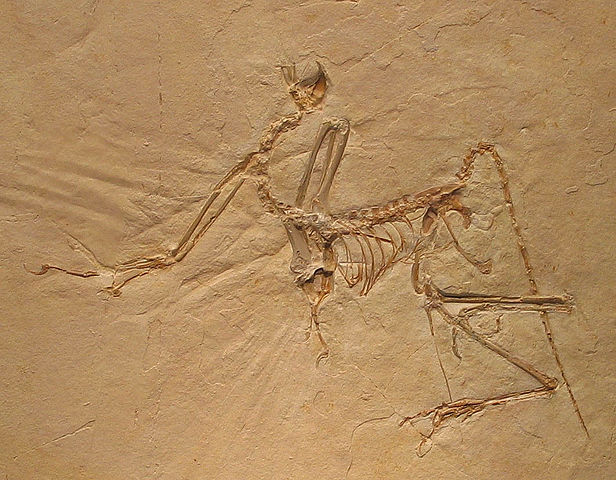
Petrifactions
Petrified remains are the result of the replacement of the original remains with very specific minerals, which must be present in sufficient quantities dissolved in the water source. Petrification is an older term and rarely used except at certain tourist sites. The process by which the organism’s components are replaced by water-soluble minerals is called mineralization. These minerals are most commonly calcium carbonate, silicon dioxide, iron sulfide, iron carbonate and calcium phosphate. As the tissue of the dead, buried organism dissolves, the gaps left behind allow these minerals to seep in. Soft tissues are generally less well preserved than the petrifaction (or petrification) of hard tissues, depending on the environment and the rate of the replacement process. Petrified forests, like the one in Arizona shown below, contain stone-like tree stumps, the result of original tissue being replaced with crystalized minerals.
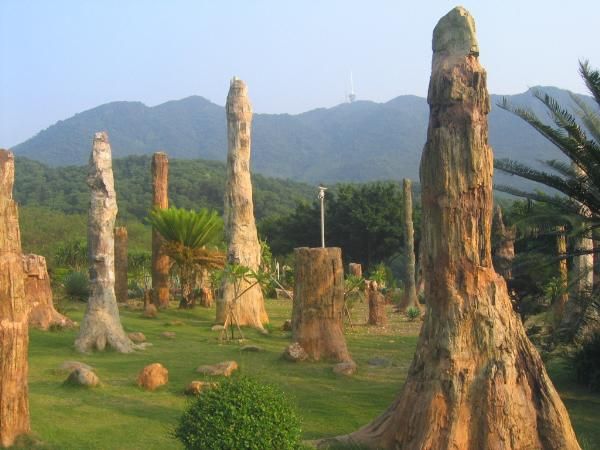
Casts and Molds
When dead organisms from earlier geologic eras are rapidly buried in sand, clay or silt sediments, the soft tissues decay, but harder tissues such as shells, carapaces, teeth and bones require a much longer period to dissolve.
A mold fossil is the equivalent of a plaster cast mold of a wax model. If an organism becomes trapped in sediment, decomposition takes place at an extremely slow rate as the sediment dries out and becomes rock. When the rock is cracked open millions of years later, the impression of the organism can be seen outlined in the rock, as in the shell featured below.
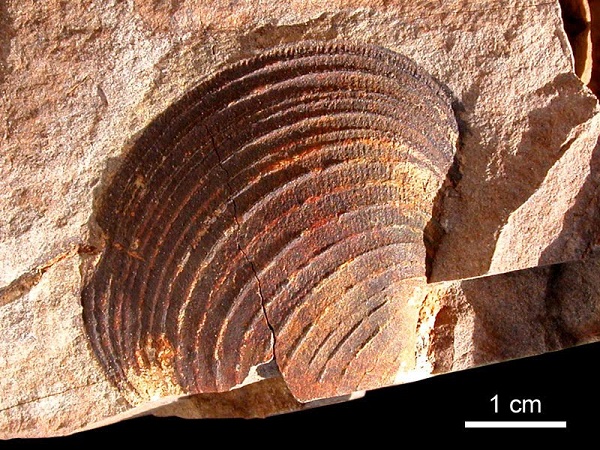
A cast fossil is the equivalent of liquid porcelain poured into a plaster-cast mold. Once dry, the mold can be removed and a porcelain version of the original wax model is the result. To become a cast, mineralization of the slowly decomposing organism is necessary. This process is the same as petrification, but in this case is named according to the fossil form. A cast always has a mold, although these can become lost over millennia. This cast of a giant whelk clearly shows its morphology in three dimensions.
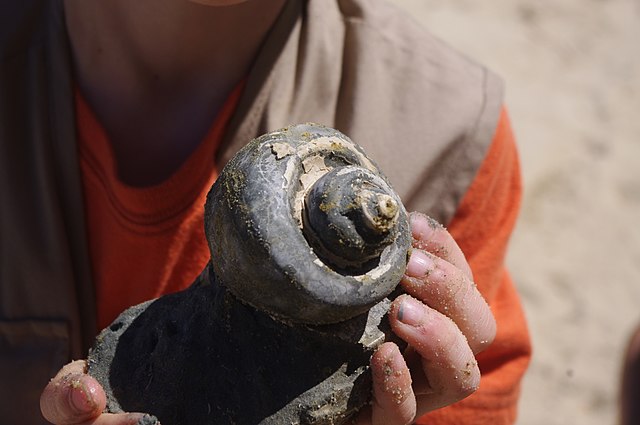
Chemical Fossils or Chemofossils
Sometimes it is only chemicals that are left behind, as in the case of carbonization where all other chemical traces slowly disappear, leaving a thin layer of carbon. This phenomenon is known as a carbon film fossil or phytoleim and looks like a careful black or brown tracing of the original organism in two dimensions. Carbon films usually occur at the same time as compression, leaving a fine carbon print on the surface of a rock. In fact, any organic molecules left behind that prove the existence of past life are considered to be chemical fossils.
Traces, Tracks and Trails
Trace fossils, also called ichnofossils, tell us about an organism’s behavior rather than representing its anatomical form. Traces are split into four sub-groups – tracks, trails, coprolites, and gastroliths. Tracks are footprints, paw prints or claw prints which become covered with sediment before they are washed away by rain or wave. Trails are not usually made by feet, but by tentacles, the crawling patterns of snakes and worms, or the boreholes of prehistoric beetles. The picture below features a Tyrannosaurus rex track.

There are two other classes of trace fossils; coprolites and gastroliths. The first represents fossilized feces which usually contain difficult to digest remnants of a meal. Coprolites are usually petrified, or cast and mold fossils. Gastroliths are stones swallowed by certain animals to aid digestion.
How are Fossils Formed?
As already mentioned, the ideal conditions for fossilization are immediate burial in hypoxic, mineral-rich sediments in a low temperature environment. These elements make the existence of fossils rare. Four types of process contribute to the formation of a fossil. These are mineralization, carbonization, encrustation and distillation. They occur once an organism has become trapped within the surrounding sediment, and primarily depend on the mineral composition of silt and water.
Mineralization
Mineralization is the most common process in fossilization. Water within the sediment contains minerals that, over time, slowly replace the tissues of the original living organism. The most prevalent minerals that contribute to the fossilization process are calcium carbonate, iron sulfide, iron carbonate, calcium phosphate, and silica (silicon, silicon dioxide or quartz).
Carbonization and Distillation
The initiation of carbonization requires a certain type of bacteria that creates an anaerobic environment devoid of any oxygen or nitrogen. This bacteria turns plant life into carbon. Under millions of years of vertical compression, these ancient carbon fields become coal deposits. Distillation describes the process by which carbon film or phytoleim fossils are formed. This is an extremely rare occurrence, but can give a fine image of soft tissues. Fossils obtained by distillation are usually badly preserved, although significant external detail is possible.
Encrustation
Encrustation occurs in the presence of minerals – usually calcium carbonate – deposited in various layers on top of the remains of an organism. As tides rise and fall or water levels fluctuate, minerals slowly form a mold. While mineralization replaces organic matter, encrustation covers it. Mineralization will form a cast, encrustation the mold.
Quiz
